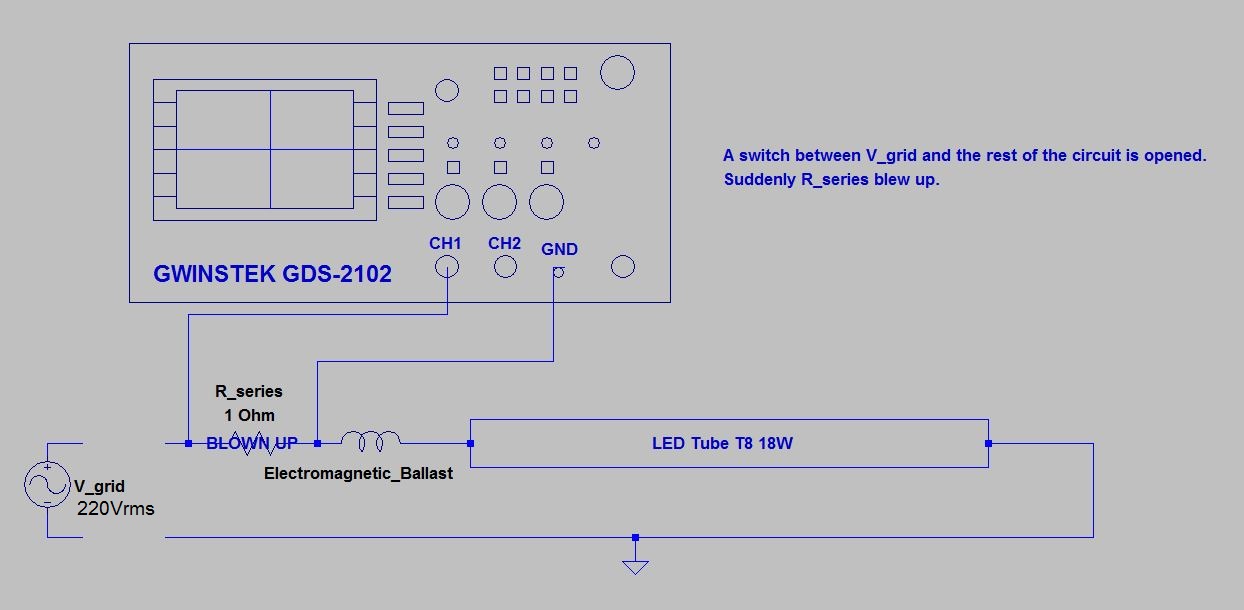I want to see the input current waveform of an LED T8 18W. An EM ballast is purposely placed in series with the lamp. I don't have a power analyzer. What's available is a GDS-2102 oscilloscope. So I connect 1 Ohm resistor in series with the lamp. The waveform of the voltage across the 1 Ohm resistor should match the waveform of the input current.
I put the oscilloscope probe and its ground probe across the resistor's terminals. And it works, a waveform I believe typical of input current of LED lamp is shown in the screen.
Then I open a switch connecting the grid to my experimental circuit with the probe still in their position. Suddenly the 1 Ohm resistor blew up. What is happening?




